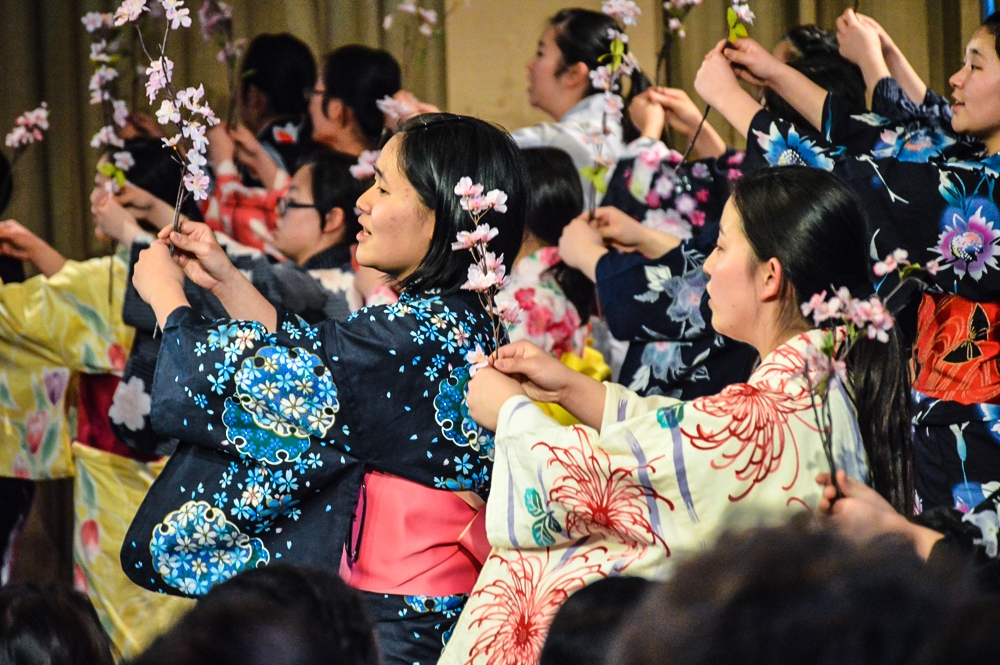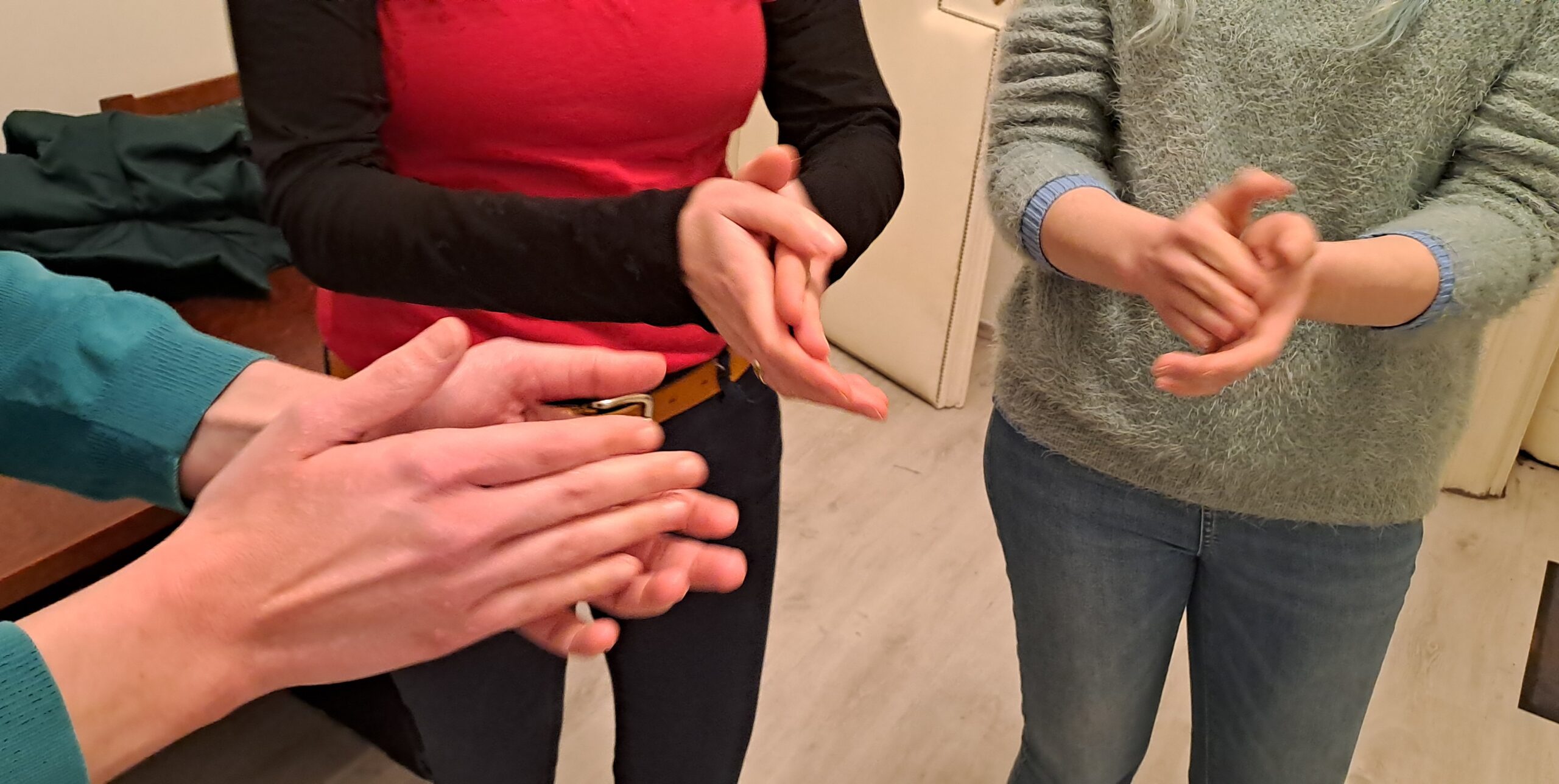by immusic | Nov 30, 2022
Category
rhythmic
Age
12+
Number of participants
8-12
Duration
approx. 30 min.
Working method
group work
Musical abilities of the trainers
1 2 3 4 5 6
Equipment and instruments
- black/whiteboard, papers, crayons
- optional: music player / app to play the song
Competences
- attention
- collaboration
- cooperation
- empathy
- rhythm recognition
Musical Hot Potato
This activity is generally a warming-up exercise, this funny game
is useful as it gives the participants the opportunity
to get to know each other.
AIM
The main goal of this game, designed for making friends, is to introduce the participants to the joy of listening to music and singing together with the help of sharing personal experiences, as well as to give them some knowledge about playing music, understanding and enjoying it.
Description
This activity usually opens the musical sessions. It requires a blackboard or a whiteboard, or carton sheets on which the instructor writes five questions about the students’ music preferences and about the participants. Usually these questions help the participants to learn about each other.
For example:
What is your favourite song?
Do you play any instrument?
What is your favourite band?
What do you like to do in your free time?
Do you have a favourite film music?
The participants sit in a circle, and pass a ball or an egg shaker in a clockwise direction at a steady beat, while the selected music is being played. When the instructor stops the music, the participant who is holding the object has to answer one of the questions on the white/blackboard.
This activity is useful for getting group members to interact with each other at the beginning of a musical session. It can be a singalong activity or music listening session as well.
by immusic | Nov 30, 2022
Category
vocal
Age
12+
Number of participants
8-12
Duration
approx. 25 min.
Working method
group work
Musical abilities of the trainers
1 2 3 4 5 6
Equipment and instruments
- black/whiteboard, papers, crayons
- optional: music player / app
to play the song
Competences
- collaboration
- attention
- concentration
- movement coordination
- sence of rhythm
Feel the Music
This activity is generally a warming-up exercise, it gives
the participants the opportunity to get to know each other.
AIM
In addition to the participants’ steady beat, this task is suitable for the development of many competencies through improvisation and quick, yet accurate reaction. It helps to develop musical skills and competencies, i.e. sence of rhythm, concentration, patience, and assistance to practising impovisative chamber music.
Description
- The instructor plays a song to the group and asks them to concentrate on its characteristics.
- As the music is played, allow participants to walk up to the black/whiteboard and write one word that describes what they are listening to. After some minutes, a lot of words will be on the board.
- The next step is to ask the participants to group the words into categories. Select the words that relate to instrumentation, rhythm, genre, tempo, timbre, melody, lyrics or the mood.
- Each aspect can be discussed with the participants to help them learn more about music appreciation.
If we choose a popular melody, we can sing along with the recording at the end, or we can improvise a rhythm to it with instruments.
by immusic | Nov 30, 2022
Category
vocal
rhythm
Age
10+
Number of participants
10-20
Duration
approx. 40 min.
Working method
group work
Musical abilities of the trainers
1 2 3 4 5 6
Equipment and instruments
- music player / app to play the song
- optional: percussion instruments
Competences
- learning and memory skill
- cultural sensitivity
- collaboration
- attention
- concentration
- rhythm recognition
Echo Game
Playful learning of a Japanese children’s song with a possible interpretation with echoing sounds, movements
AIM
The well-known Japanese children’s song offers the participants simple and easy-to-learn singing. Echo play processing requires attention and concentration and creates a special atmosphere, especially with adding instruments (drum), movements or play with lights.
Description
- The facilitator talks about the significance of children’s songs in music and poetry in everyday life and in general. After that they listen to the song in Japanese.
- Facilitator shares the translation of the Japanese text.
- The group sings the song while listening to the recording, they practise till they know the melody with confidence.
- The group can try to sing the melody in canon as signed in score (Version 1, Version 2).In version 1, we divide the team into two groups. Thus, the two groups sing the same melody, only shifted in time. The first group starts singing the melody and when they get to number 2, the second group starts over.
The version 2 is much more difficult, there we divide the team into three groups, and they sing the melody by directly entering one after the other.
Simple echo game:
Facilitator starts the eco game with the group: first participants form 2 groups and they stand opposite to each other, not close to each other. On the facilitator’s signal the first group starts to say “ho” or “ho-ho” or “ho-ho-ho” and the other group echo’s this. This game can be combined with movement, drums or flashing lights (this work better in the evening).
Lyrics
Ho ho hotaru koi
atchi-no mizu-wa nigai-zo
kotchi-no mizu-wa amai-zo
ho ho hotaru koi
Translation – Come Firefly
Fly, fly, firefly, come
The water over there tastes bitter
The water over here tastes sweeter
Fly, fly, firefly, come
by immusic | Nov 30, 2022
Category
rhythm
Age
5+
Number of participants
10-80
Duration
approx. 10 min.
Working method
group work
Musical abilities of the trainers
1 2 3 4 5 6
Equipment and instruments
- music player / app to play the song
- optional: ocarina
Competences
- collaboration
- attention
- concentration
- rhythm recognition
Storm
A play where the sound of raindrops and strom are created
by the participants only using their hands as instruments.
AIM
An energizing group exercise, it develops creativity and an understanding of how easy it is to create powerful sounds without instruments or vocals. The exercise shows the power of rhythm and how extremely effective a common rhythm is in strengthening team cohesion.
Description
Everybody stands in the circle. The facilitator explains the task.
The facilitator shows the movements and the participants have to follow one by one without stopping.
Creating the storm with movements:
- rub your palm – represents how the wind blows
- snap your finger – represents how the rain drops
- clap with your fingers – represents how rain drops heavier
- drum on your thigh – represents the storm
- stamp your feet – to create the thunder
This is the high point of the rain and storm, now we play how the storm calms down. To do that in reverse: drum on your thigh, clap with your fingers, snap your finger, rub your palm.
At the end it sounds like a rain „from calm to storm” and „from storm to calm”.
This can be also played with rain calming down a bit and then becoming heavier again etc.
Repeat with changing who leads the rhythm of the storm.
Bird and other forest animal sounds can also be added, e.g. with whistling.
by immusic | Nov 30, 2022
Category
rhythm
Age
8+
Number of participants
8-25
Duration
approx. 15 min.
Working method
group work
Musical abilities of the trainers
12 3 4 5 6
Competences
- collaboration
- attention
- concentration
- rhythm recognition
1 clap 2 claps
A rhythm based game with focusing on quick reaction.
AIM
This energizer game’s main goal is to keep the participants in deep focus. It is a competitive game and who has the quickest reaction, wins.
Description
Everybody stands in the circle.
The facilitator explains the task.
The facilitator or the group choose a music to play.
After the music starts the facilitator (or any other previously chosen member of the group) starts to clap to the rhythm of the music. The participant on the facilitator’s left has to clap to the next beat. Then the next participant to the left claps to the next beat. And they keep clapping to the rhythm round the circle one by one.
This way we create a method like playing a metronome.
What makes the task harder: if somebody claps 2 times within one beat, the sequence has to change (if they went from right to left, they have to change it to left to right).
If somebody makes a mistake by clapping not according to the order that participant is out of the circle.
This competition ends when 2 participants remain in the circle.







Recent Comments